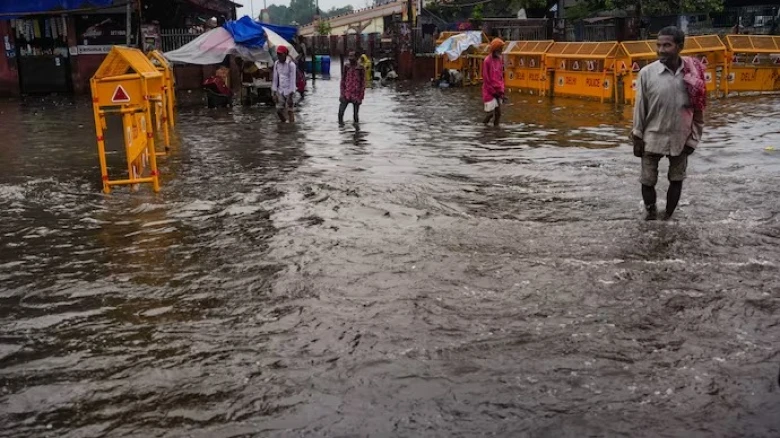Around 37,000 people live in Delhi's low-lying neighbourhoods close to the river, which is said to be prone to flooding.
Digital Desk: As Haryana released more than a lakh cusecs seconds of water into the Yamuna river from the Hathnikund barrage on Sunday, the Delhi government issued a flood alert.
With 1,05,453 cusecs of water released at 4 pm, the irrigation and flood control department claimed that this was the first warning.
The barrage's flow rate is 352 cusecs normally, but when there has been a lot of rain in the catchment areas, the discharge has increased. It takes the water from the barrage two to three days to reach Delhi.
Authorities have been directed to maintain vigilance and take appropriate measures in sensitive regions. According to the agency, quick response teams have been sent out to inform and caution residents who live close to river embankments.
The Delhi government has installed 16 control rooms, including a central control centre, to monitor on Yamuna's water level and flood-prone areas.
The Central Water Commission (CWC) earlier in the day stated that the water level in the Delhi River is rising and is anticipated to cross the danger mark of 205.33 metres on Tuesday.
At 1 pm on Sunday, the water level at the Old Railway Bridge reached 203.18 metres, according to the CWC's flood-monitoring portal. The level of alert is 204.5 metres.
According to the CWC, the water level is expected to increase to 205.5 metres on Tuesday between 11 am and 1 pm.
Over the past two days, Northwest India has seen nonstop rain, with "heavy to very heavy" precipitation being recorded in numerous locations in Uttarakhand, Himachal Pradesh, Haryana, Uttar Pradesh, and Rajasthan.
In Jammu and Kashmir, Himachal Pradesh, and Uttarakhand, this has led to overflowing rivers, streams, and drains that have severely destroyed infrastructure and interrupted key services.
With 153 mm of rain falling in the 24 hours ending at 8:30 am on Sunday, Delhi experienced its wettest July day since 1982. The situation worsened when the city received an extra 105 mm of rain between 8:30 am and 5:30 pm.
The Delhi government stated on Monday that all schools will be closed due to the severe rains. It also revoked the government employees' Sunday leave and told them to work in the field.
Chandigarh and Ambala reported a record rainfall of 322.2 mm and 224.1 mm, respectively, according to the India Meteorological Department (IMD).
Parts of Uttar Pradesh, Uttarakhand, Himachal Pradesh, Haryana, Rajasthan, Madhya Pradesh, and Delhi are included in the catchment area of the Yamuna river system.
Around 37,000 people live in Delhi's low-lying neighbourhoods close to the river, which is said to be prone to flooding.
Despite the Delhi Development Authority (DDA), the revenue department, and private persons owning land, there have been encroachments on the river floodplain over the years.
The river twice over the danger line in September of last year.

Leave A Comment